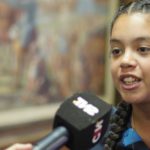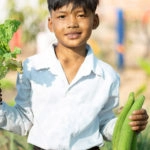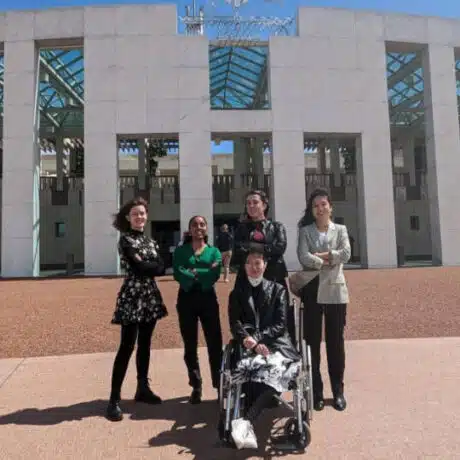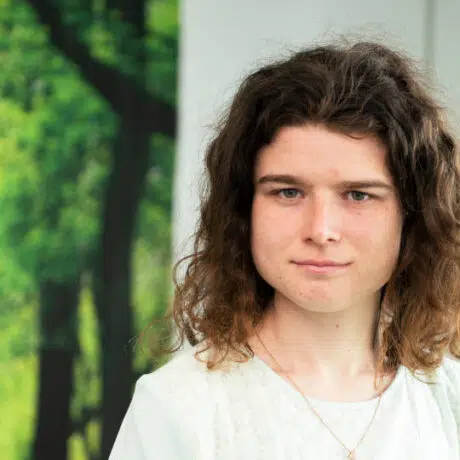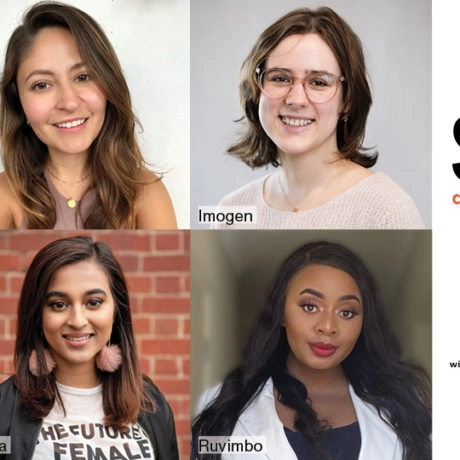News and Stories - Youth - 16 October 2019
Free to Be: A Youth Activist’s reflection
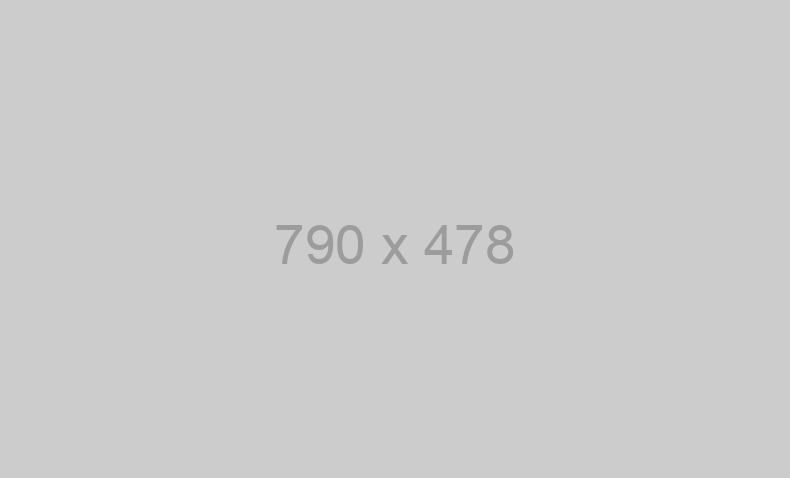
There have been many evolutions of our Safer Cities work over the last four years, and looking back we have seen some incredible outcomes and progress as a result.
In 2016, we adapted elements of this global program in Melbourne to develop Free to Be, an interactive digital online map, which allowed girls to share areas where they do and don’t feel safe in their cities.
In the last four years, together with young women and Plan International globally, we implemented the project in five cities around the world – Sydney, Lima, Kampala, Delhi and Madrid.
Thanks to Free to Be, clear and powerful data on the safety and inclusion of girls and young women is available for the first time ever, providing valuable evidence of the harassment public spaces.
Using this data, we’ve been working with our volunteer Youth Activists, young people, community leaders, governments and transport bodies, campaigning for policy and practice change and challenging attitudes and behaviours towards women and girls, to make cities safer for everyone.
A Youth Activist’s reflection
Alice Rummery is one of our Sydney-based Youth Activists and here she reflects on her involvement with Free to Be:
Plan International understands that the lived experience of girls and young women is essential, and provide a platform called the Youth Activist Series to ensure that the voices of girls and young women are considered in key campaigns.
I became a Plan International Youth Activist in 2018 and got the opportunity to participate in the Free to be Campaign.
From the co-design of the platform, to working with the media on launch day, to sharing the final data with key decision makers and stakeholders, this experience was empowering and life changing for me. It highlighted that as a young woman, the experience that I bring to the table is valuable, worth listening to and essential when bringing about change. Not only was I continually inspired to work with so many other incredible Youth Activists, but to see the impact that Free to Be had internationally and on the people around me was invigorating and inconceivable.
I have always been inspired by the powerful women that have come before me. When I was younger, seeing amazing women share their stories made a big impact on me. So, when Free to Be was launched, I wrote an opinion piece that was published in the Sydney Morning Herald. This piece recounted my experience of street harassment and challenged why I and countless other women had to experience this as a part of every-day life.
I wasn’t really ready for the reaction to the article, from friends and strangers reaching out to me, to vigorous online trolling – it was overwhelming. My article also started a twitter hashtag, where women bravely shared their experiences of harassment on public transport in Sydney. This made a big impact on me – by plainly sharing my own experience, I had created a conversation much bigger than I could fathom. This proved to me how valuable the experiences of girls are, and how when we speak, we can make waves.
Along with this, I got to bring attention to the issue of street harassment by being on programs such as Sunrise, Al Jazeera, The Project, 2GB radio, TEN News, SBS Viceland and Buzzfeed. In these interviews, I asked other women to share their experiences of street harassment in the hope that the collective stories could help provoke change.
The reaction to the Free to Be map was incredible. To be a part of a campaign that saw thousands of women share their stories across the world and provide ground-breaking data about street harassment was monumental. It was also heart-breaking to see so many pins across Sydney, detailing what women have had to go through in our city. This fortified me with further energy to make a difference with the data retrieved from the map.
After the map closed and the data was analysed by Monash University’s XYX Lab, I got another opportunity to share my story. Along with other wonderful Youth Activists, I participated in multiple sessions with key decision makers in Sydney to share the data from the map and ask them to help create a safer Sydney for women. Speaking to these people in positions of power was a unique experience. As someone who was still in university at the time, it was a bizarre experience to have senior bureaucrats, police officers, mayors and city planners asking you for advice. The data does really make a big impact and I am very thankful that these decision-makers encouraged us and listened when we spoke, shared our stories and suggested solutions.
Many of these key stakeholders and decision-makers are now running their own projects in order to make Sydney safer for women. I feel so proud, and honestly, relieved of this outcome. Now that Free to Be is over, I am entrusting these-decision makers to continue making change.
Besides this, the thing that has the biggest impact on me was seeing the people in my life respond to Free to Be. So many women thanked me. So many men thanked me. And if that isn’t powerful, I don’t know what is.

